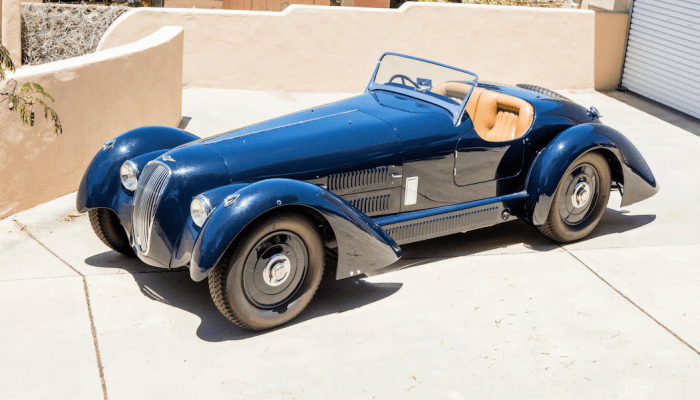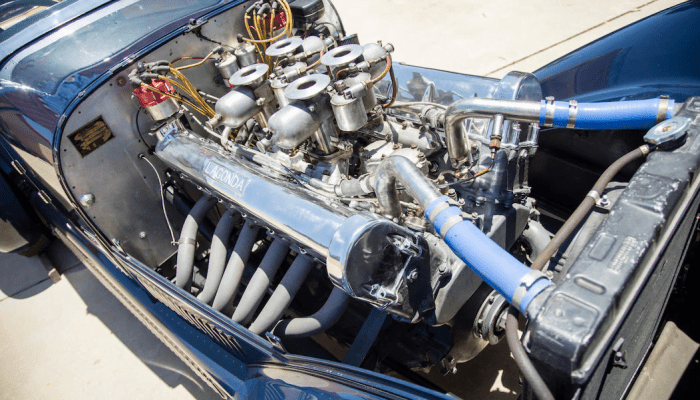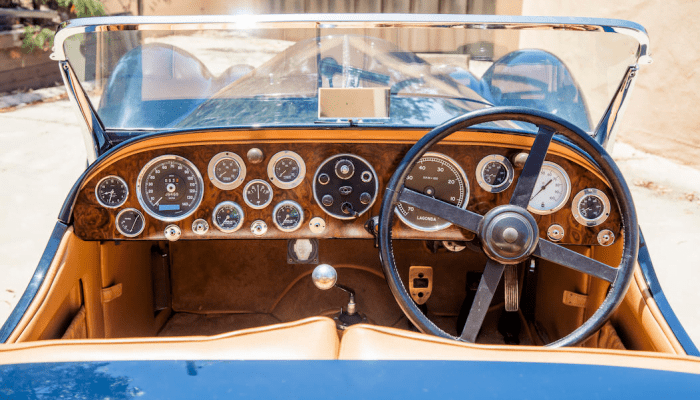A quite remarkable piece of automotive engineering, the W O Bentley-designed Lagonda V12 was one of the outstanding British models of its day and one of the exclusive handful of 1930s road cars that could exceed 100mph in standard tune.
Not only that, but the magnificent, 4.5-litre, V12 engine produced sufficient torque to endow the car with a walking-pace-to-maximum capability in top gear.
For Lagonda, the year 1935 had brought with it bankruptcy and rescue, its benefactor being a young solicitor named Alan Good. Good reorganized the company and recruited W O Bentley, by then disillusioned with life at Rolls-Royce, which had acquired Bentley in 1931. Bentley succeeded in refining the muscular, Meadows-engined Lagondas while working on a vastly more-advanced design that many consider the great man’s finest.First seen in 1936, the Lagonda V12 did not commence deliveries until 1938 and only 189 had been built before the coming of WW2 ended production. The advanced chassis employed double-wishbone independent front suspension and was available with a varied choice of coachwork, including limousine. Frank Feeley, stylist of Aston Martin’s post-war ‘DB’ cars, was responsible for the elegant factory bodywork. As usual, the short-chassis Rapide roadster provided even more performance.
The V12’s announcement demonstrated that the revitalised company was very much back in business, an impression Lagonda’s decision to enter the 1939 Le Mans 24-Hour Race can only have enhanced. The marque already possessed a creditable Le Mans record, a short-chassis 4½-Litre driven by John Hindmarsh and Luis Fontes having won the endurance classic outright in 1935. In October 1938 a Lagonda V12 saloon driven by Earl Howe had covered 101.5 miles at Brooklands in a single hour, despite having to stop to change a burst tyre, and this together with other high-speed tests, during which the car had shown complete reliability, indicated that it would be a highly suitable candidate for reviving British prestige at Le Mans. Accordingly, it was decided to enter a two-car team in 1939 with the aim of securing valuable data, and then to mount a full-strength challenge the following year.
In the race the two streamlined two-seater Lagondas fared better than expected, Messrs Brackenbury and Dobson finishing in third place with Lords Selsdon and Waleran fourth. Had a less conservative race strategy been employed, then either might have won.
🏁 Motorblog | FOLLOW
https://gaukmotors.co.uk/motorpedia
Curated Automotive Awesomeness | Follow, Grab a Coffee and Enjoy. All the latest and best from the world of motoring





